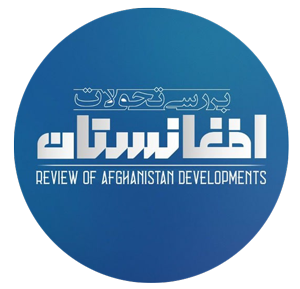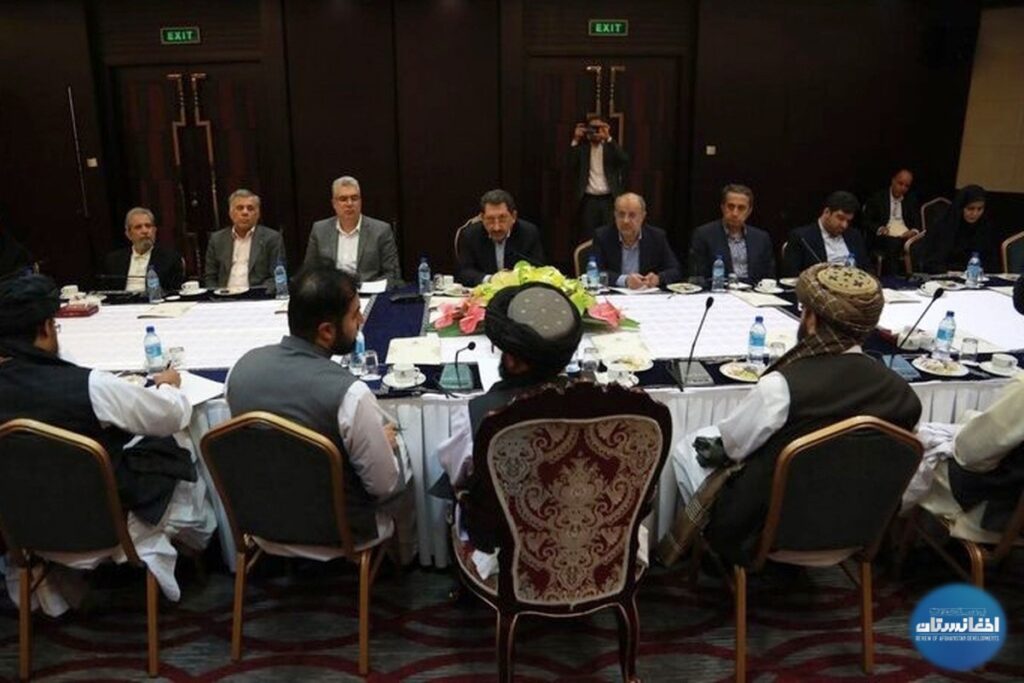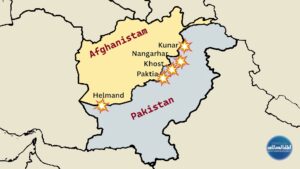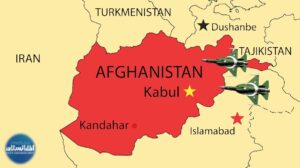Review of Afghanistan developments
Trade is essential in fostering relationships between countries; this is achieved through the establishment of mutual advantages and economic interdependence among countries. In recent years, Iran has emerged as one of Afghanistan’s primary economic and trade partners, consistently holding the top position for several years. This ongoing trend and the existing potential prompted the recent visit of the Iranian Minister of Industry, Mines and Trade to Afghanistan, during which the trade delegations of both nations aimed to increase the volume of bilateral trade from the current $3 billion to $10 billion. Historically, Afghanistan and Iran have maintained relatively strong economic ties, and following the withdrawal of American forces from Afghanistan, new opportunities have arisen for Iran.
Despite being a landlocked nation, Afghanistan holds significant geographical value for Iran, potentially serving as a transit link between areas such as South and Central Asia. One of the opportunities presented was India’s utilization of Iran’s Chabahar Port along with Afghanistan’s geographical position to reach Central Asia, with Delhi planning to invest around $500 million in the initial phase of Chabahar Port’s development, which has unfortunately not come to fruition for various reasons.
Nevertheless, Iran’s strategic geographical position and economic resources have significantly enhanced the volume of transit and trade between Iran and Afghanistan. The primary exports from Iran to Afghanistan include fuel, construction materials, petrochemicals, consumer goods, and food, which together represent the largest share of these exports. The annual trade volume between the two nations is estimated to be around $3 billion. Due to various factors such as geographical closeness, a shared border of 920 kilometers, interconnected links, Afghanistan’s requirements, and Iran’s capabilities, there exists substantial potential for trade to expand dramatically.
Afghanistan’s expanding economic potential presents an opportunity for Iran to closely examine this emerging market through economic agreements across multiple sectors. Iran’s capabilities in various domains, coupled with Afghanistan’s necessity to advance towards industrialization, necessitate that both nations engage in collaborative efforts in several areas, including electricity generation and transmission, mining, infrastructure development such as roads and railways, food production industries, engineering services, and more.
Overcoming trade barriers between the two countries
Given the various interpretations and the significant capacities and potential to achieve a trade volume of 10 billion dollars, both nations must address the challenges and obstacles they face. While some of these challenges stem from regional developments and lie outside the control of the involved parties, many can be surmounted through effective and coordinated management. A critical issue in this regard is the efficient functioning of the customs operations between the two countries. Indeed, the primary requirement for realizing the aforementioned objectives is the continuous 24-hour operation of the joint customs, particularly at Dogharun, which has been pivotal in facilitating trade between the two nations and can also act as a conduit for the importation of Iranian goods into Afghanistan.
Today, the modernization of customs and the decrease in truck delays have led to an expansion of trade between nations, necessitating that both countries leverage the experiences of others. At present, several countries in the region have reached a level of advancement in customs operations, allowing trucks transporting goods to complete customs procedures in under an hour. This is particularly crucial for Afghanistan, as it seeks to modernize and expedite the clearance of trucks. Tackling this issue, in conjunction with enhancing road security, could prove beneficial in drawing Iranian cargo.
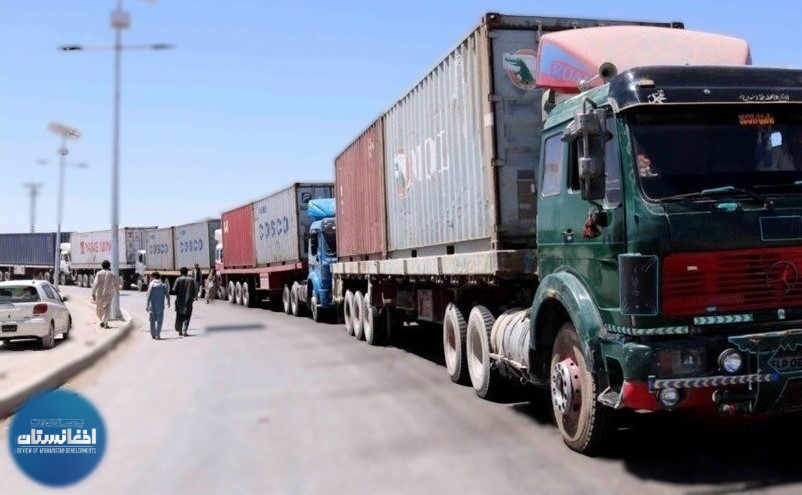
Another significant concern regarding the advancement of bilateral trade is the establishment of a relative equilibrium between exports and imports. For instance, when Iran’s exports to Afghanistan amounted to $2 billion, Afghanistan’s exports to Iran were merely $30 million, resulting in a trade balance that is highly favorable to Iran. Consequently, in order to enhance the volume of bilateral trade, Iran needs to boost its imports from Afghanistan.
At first glance, it may appear that Afghanistan’s economic conditions and the underdevelopment of its production sector hinder progress. However, it is important to recognize that the agricultural sector in this country, supported by its plentiful water resources, provides a solid foundation for the importation of essential agricultural products or even for extraterritorial cultivation. For instance, in recent years, Iran has been sourcing fodder from European nations, and if it were to collaborate with Afghanistan, it could procure these products from Afghanistan at a reduced cost. In this context, stringent restrictions imposed by Iran on the importation of agricultural goods such as corn, barley, soybeans, oilseeds, and cotton have obstructed the advancement of bilateral relations. Consequently, one of the primary concerns for Iranians regarding extraterritorial cultivation and its subsequent transportation to their country is this very stringent oversight. If this issue is addressed, there is hope for an increase in Afghan exports to Iran. Furthermore, revising the regulations governing the importation of agricultural products is a crucial requirement for Iran to achieve a trade volume of $10 billion with Afghanistan.
One of the barriers to securing a $10 billion trade agreement between the two nations is the issue of currency exchange, which is influenced by sanctions imposed on Iran. In this context, the export by rials from Iran may provide a solution to this issue. Although this has received approval from the Central Bank of Iran, it has yet to be put into practice. The utilization of “offshore rials” proves beneficial in this situation. Offshore rials refer to Iranian rials that are stored outside of Iranian borders and can be utilized for international transactions. This approach could also be instrumental in eliminating the need for the dollar and in bypassing sanctions on both Iran and Afghanistan.’
Furthermore, one of the approaches to enhancing bilateral exchanges involves the significance of Chabahar Port and the finalization of the Chabahar-Zahedan railway. Since assuming power, the Taliban administration has consistently highlighted the critical role of Chabahar Port, particularly due to its potential to positively influence the nation’s exports and imports with India and the Arab nations of the Persian Gulf. In this context, the significance of the Chabahar-Zahedan railway must not be underestimated, as it can facilitate the connection between the subcontinent and Central Asia via Iran, thereby increasing Iran’s share in transit.
Alongside economic difficulties, various political and social issues must also be addressed due to their repercussions on the economy. For instance, the longstanding tensions between Iran and Afghanistan regarding water distribution have continued for over a decade and remain unresolved since the Taliban regained control in 2021. Iranian authorities have consistently urged the Taliban administration to honor Iran’s entitlements as stipulated in the 1973 Helmand River Water Treaty. This agreement mandates that Afghanistan supply Iran with 26 cubic meters of water per second, equating to 850 million cubic meters annually. Achieving a consensus in this matter would significantly enhance trade relations.
Related Articles
Stability of the Afghani Currency in 2025: Factors and Prospects
The Economy of Afghanistan under Taliban governance
Conclusion
Despite their geographical closeness, extensive border, shared needs, and many similarities, it is feasible to increase the bilateral trade volume between Iran and Afghanistan from $3 billion to $10 billion within the medium term. The Taliban government’s focus on economic development in this new era may play a crucial role in reaching this trade target. Initially, both countries must conduct a realistic evaluation of the challenges they encounter and work towards resolving them.
It is important to highlight that the economic collaboration between these two nations is essential at present and indeed yields mutually beneficial and win-win outcomes; Iran requires this partnership to navigate around sanctions and the economic pressures imposed by the West, while for the Taliban administration, such cooperation represents an opportunity for economic development, addressing the economic crisis, and achieving integration into the regional economy, which will also lead to diplomatic ramifications.
